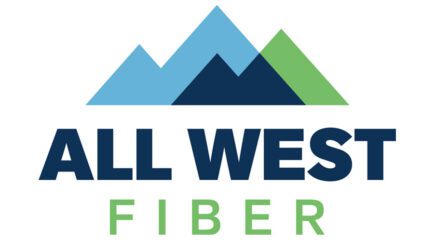When you think about the internet, most people want fast speeds that can handle lots of tasks at once. But just how many devices can run smoothly on a 1-gigabit internet plan? Whether you’re streaming movies, playing games, or using smart home gadgets, knowing how much bandwidth you have matters. A 1-gigabit plan (that’s 1,000 Mbps) is like the ultimate setup for today’s homes, giving you fast speeds perfect for streaming, gaming, remote work, and more. Let’s break down how it works, how many devices can use it, and tips to keep your network running smoothly.
What is 1-Gig Internet & Why is It Popular?
A 1-gigabit internet plan gives you download and upload speeds of up to 1,000 Mbps—this is made possible by light pulses through fiber optic cables. Compared to older internet types like DSL or cable, gigabit internet is way faster and more reliable. Here’s why it’s a favorite:
- Super-fast speeds: Perfect for streaming in 4K, online gaming, and video calls without interruptions.
- Handles multiple devices: Great for families with lots of phones, tablets, and smart tech running at the same time.
- Low latency: Important for gaming and apps that need instant response times.
How Many Devices Can 1 Gigabit Internet Support?
It depends on what your devices are doing. Gigabit internet gives you 1,000 Mbps, which is shared among all connected gadgets. Here’s a simple look at how much bandwidth common devices use:
Device Type & Bandwidth Usage Estimates
| Device Type | Bandwidth Usage Overview |
| Streaming (4K Netflix, YouTube, etc.) | 25-50 Mbps per stream |
| Gaming (Xbox, PlayStation, PC, etc.) | 10-50 Mbps per session |
| Video Calls (Zoom, Teams, etc.) | 3-10 Mbps per call |
| Smart Home Devices (Thermostats, Security Cameras, etc.) | 1-5 Mbps per device |
| Web Browsing & Social Media | 1-5 Mbps per device |
For example, let’s say your family is streaming three 4K movies, gaming online, and doing a video call at the same time. That would use about 140-200 Mbps, leaving plenty of room for other things like smart home devices, too.
As you get closer to using your plan’s bandwidth limit, things can start to slow down. This happens because devices and tasks are all competing for the same bandwidth, especially during busy times when everyone in the house is online. Increasing your bandwidth to at least 1 gig helps keep your home running smoothly.
Can 1-Gig Internet Handle a Smart Home?
Definitely! Gigabit internet works great for smart homes because it can handle cameras, streaming devices, and automation tools all at once. If your house is big or has thick walls, try upgrading to a mesh network or a WiFi 6 router for better coverage. With 1-Gig speeds, you’ll have plenty of bandwidth to support multiple users and devices without lag. It’s a reliable solution for homes that rely on constant connectivity and automation.
Factors That Affect Gigabit Internet Performance
Even though gigabit speeds are fast, some things can slow them down. Here are the key points:
WiFi vs. Ethernet - Which is Faster?
Ethernet cables give you full gigabit speed. WiFi might be slower because of interference or distance from the router. Using a WiFi 6 router can help fix this problem and handle lots of devices at once.
Router & Network Equipment Limitations
Old routers and modems can limit your speeds. Upgrading your equipment is important to get the most from your gigabit plan.
Tips to Optimize Your Gigabit Internet for Multiple Devices
Want to make the most of your gigabit connection? Here are some tips:
- Use a high-performance router (WiFi 6 or mesh network).
- Set up guest networks to separate home and visitor traffic.
- Enable Quality of Service (QoS) settings to prioritize certain devices.
- Use Ethernet for critical devices like gaming consoles and work PCs.
Conclusion
A 1-gigabit internet plan can easily support more than 20 devices running at the same time. If you’re into streaming, gaming, or smart home technology, gigabit speeds make everything run smoothly without lag or buffering.
Ready to upgrade your connection? Check out All West’s fiber internet plans for reliable gigabit speeds designed for your needs.
FAQ
Is 1-Gig Internet Enough for a Family of 4 or More?
Yes, 1-gig speeds can support 20+ devices at once if properly managed.
Will a 1-Gig Connection Improve Gaming & Streaming?
Yes, low latency and high speeds help reduce lag and buffering.
Do I Need a Special Router for 1-Gig Internet?
Older routers may cap speeds at 500 Mbps or less - consider upgrading to a WiFi 6 or mesh system.






